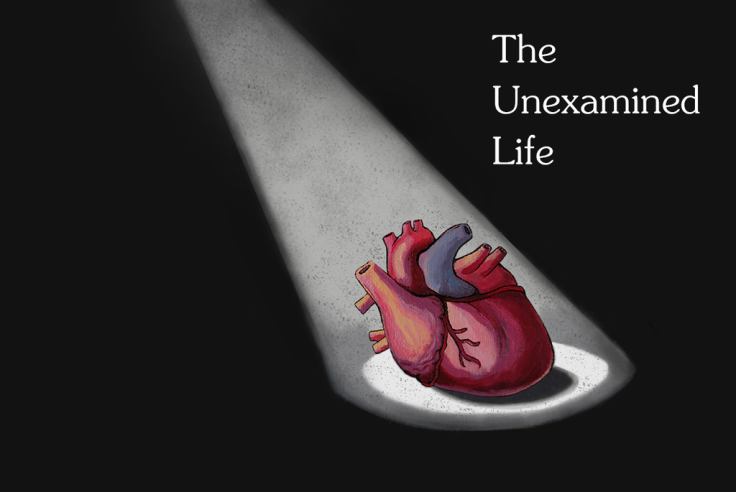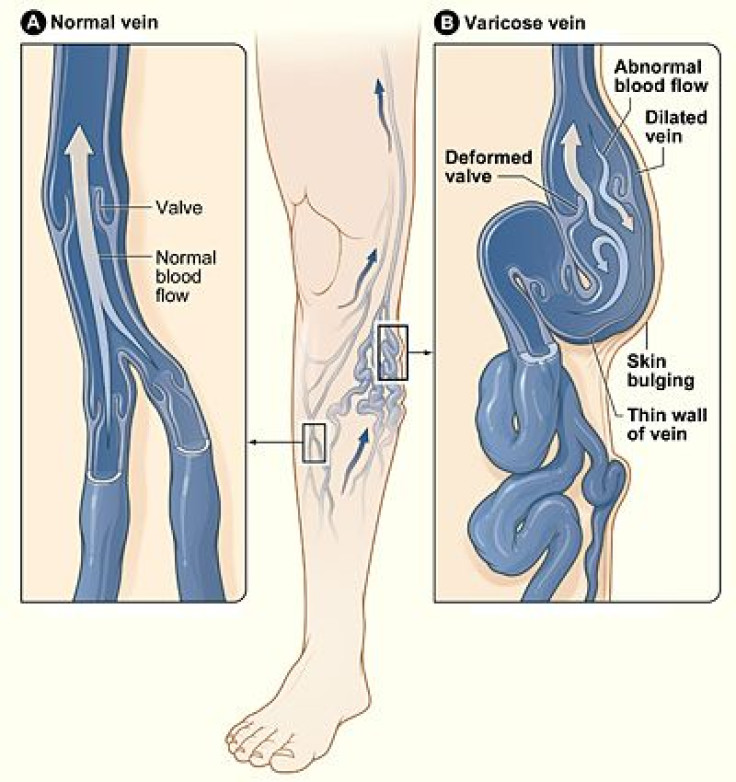Why Doesn't Blood Rush To Your Feet?

If you’re the kind of person who upholds logic and reason, your instincts should tell you that despite blood’s many biological quirks, it will at least respect the law of gravity — that is, flow downward. In theory, it should be pooling in our feet at all times, leaving our upper extremities to turn a ghostly white. But as any purple-faced 6-year-old hanging from the monkey bars can demonstrate, blood rushes only to the head.
As awesome a theory as it may be, blood doesn’t contain some mysterious anti-gravity protein that renders it immune from the pull of big objects. The reality is much simpler: Gravity isn’t the greatest force acting on your blood.
A quick refresher from high school biology: Arteries carry blood away from the heart, and the muscles surrounding them help circulate the blood to the various extremities. Veins, however, don’t have the same musculature to help them push the blood back to the heart.
“They depend a little bit on the amount of blood that’s still being pushed through the arteries to help push the blood back up,” said Dr. Alisa Wolberg, a researcher at the University of North Carolina who studies the formation of blood clots. In between heartbeats, the veins need a way of keeping that blood from shooting back down. Luckily, they have valves.

“Because of the way they’re shaped — we draw them as looking like barbs — they go around the entire vessel, so the blood can’t go back down through them,” Wolberg told Medical Daily. In line with that, the human body has very few valves above the heart, apparently because gravity is already doing the work of bringing blood downward.
As Wolberg points out, however, animal models are a different story. Lab mice (like all other mice) don’t walk on their hind legs, and so what little blood gets circulated through their legs ends up staying in motion. “They don’t have valves in the major vessels used for these studies,” which would otherwise be just a fun anecdote, if not for the fact Wolberg and countless other scientists rely on mouse models to understand how humans work. Recognizing those differences is important, as it’s one definitive way — in case you needed reminding — that “mice are not like humans.”
Sit, Sit, Repeat
Humans evolved to create factory farming, but now our teeth rot at the surplus of sugar. We discovered germs are the root of all evil, but we’ve sanitized ourselves into an allergy epidemic. The same may be true for blood flow and a sedentary lifestyle.
Over the last year or two, journalists (this author included) have taken a particular liking to equating the modern worker’s propensity to sit down with the hook and allure of cigarettes. Sitting, science has proclaimed, could be the new smoking. Even worse, the hour you spend at the gym won’t necessarily reverse the negative effects of many hours spent sitting in your car on the way to work, sitting at work, sitting on the way home, sitting while you watch TV, and lying down to sleep, before doing it all again.
Specifically, the risks of prolonged sitting include deep vein thrombosis, a condition in which the blood that flows through the deep veins in a person’s leg starts to clot. This can happen for a variety of reasons, including genetics, injury, cancer, and smoking. But sitting may be the most pervasive, and the valves share some responsibility in that.
Blood wants to keep moving in a straight line, Wolberg says. But when it hits the valves in the lower leg, it has to change course and make something of a detour.
“Behind the valves are these valve pockets — little areas in which the blood eddies a little bit. And where that blood eddies, that stagnant blood is more prone to clotting than the blood that is moving at a good pace.” Without an active calf muscle to contract and send the blood circulating, the resulting clot can break free from the vein and travel to the lungs, impeding blood flow.
The best recommendations for avoiding these health hazards involve getting up and walking around for a few minutes every hour. If you’re feeling more adventurous, you might consider sitting on a stability ball or investing in a standing desk. The added difficulty of maintaining good posture may make the experience uncomfortable at first. But over time your body should adjust to the sensation of keeping itself engaged — provided, of course, that you don’t fall off the wagon and flock to the first chair you see.



























